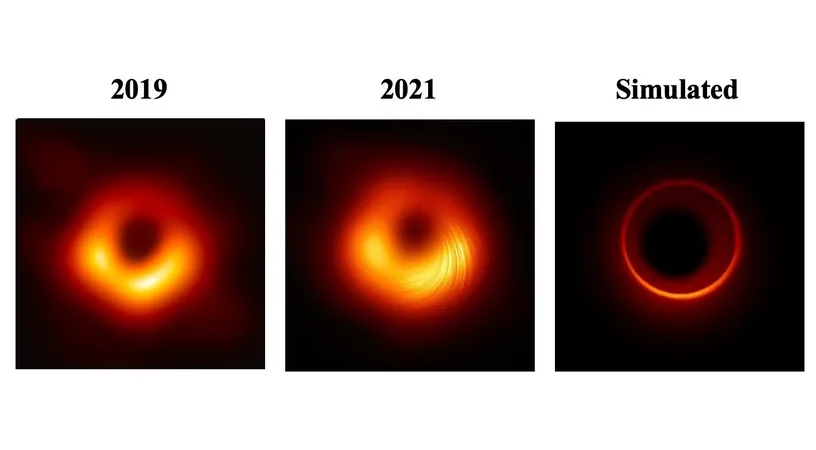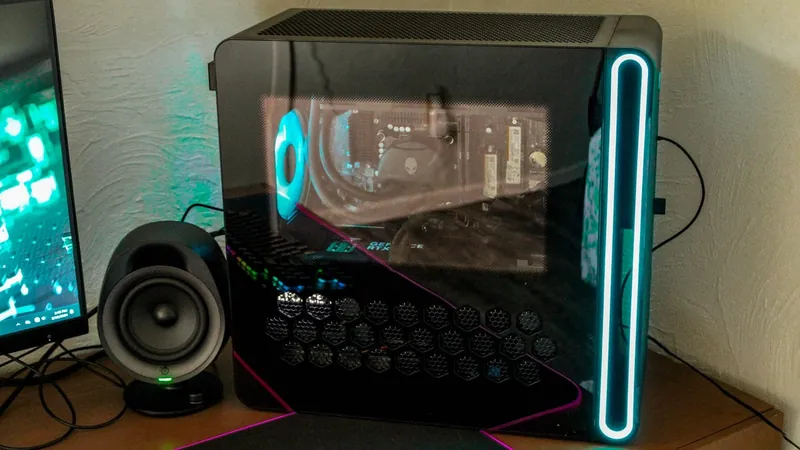
TBIRD Technology: A Game Changer in Imaging Black Holes’ Photon Rings!
2024-11-19
Author: Jacques
TBIRD Technology: A Game Changer in Imaging Black Holes’ Photon Rings!
In an exciting leap for astrophysics, the TBIRD technology has emerged as a revolutionary tool that could dramatically enhance our ability to capture images of black holes—specifically, their elusive photon rings, a phenomenon where light spirals just before being swallowed by these cosmic giants.
A Pivotal Moment in Astronomy
April 2019 marked a pivotal moment in astronomy when a global cohort of astronomers unveiled the first-ever image of a black hole located in the galaxy Messier 87 (M87). This groundbreaking achievement revealed glowing gas encircling the black hole’s shadow. Two years later, the same team provided further insights by capturing the polarization of light around the black hole, offering a glimpse into its magnetic field dynamics.
Event Horizon Telescope (EHT)
These remarkable images were produced using the Event Horizon Telescope (EHT), a powerful array of radio telescopes scattered worldwide that work collectively to synthesize images of celestial phenomena. However, to reveal even finer details about black holes, scientists aim to extend the EHT into space, a project that presents considerable challenges, especially in data transmission.
Why Space Matters?
The concept of extending the baseline distances of EHT observations means positioning one or more telescopes in space. Currently, the maximum separation for Earth-based telescopes is limited to about 13,000 kilometers. By shifting the scope to the cosmos, astronomers hope to overcome Earth’s atmospheric limitations and enhance their imaging capabilities, ultimately capturing the photon ring where light orbits closest to the black hole’s event horizon. Achieving this feat would enable scientists to test Albert Einstein's theory of general relativity against the extreme conditions present around a black hole.
The current technological barriers are exemplified by the immense data requirements for producing an image. The first EHT image contained an astonishing 4 petabytes of data; such vast volumes could prove even more complex with a space-based observatory. To address these challenges, the proposed Black Hole Explorer (BHEX) mission seeks to leverage cutting-edge technology from the MIT Lincoln Laboratory.
Introducing TBIRD Technology!
In May 2023, the TeraByte InfraRed Delivery (TBIRD) laser communications system made headlines by achieving an astounding data transfer rate of 200 Gbps from low Earth orbit (LEO)—a speed 1,000 times faster than conventional satellite communications! This capability is vital for transmitting the massive datasets required to accurately image the black hole's intricate features. As noted by Jade Wang, an assistant leader at the MIT Lincoln Laboratory, "These high data rates will enable scientists to image the photon ring structure of a black hole for the first time."
Collaboration between the TBIRD team and astronomers at the Harvard-Smithsonian Center for Astrophysics (CfA) aims to design the necessary high-rate data downlink for the BHEX mission, which will operate in middle Earth orbit (MEO). This leap in technology means that astrophysical discoveries of unprecedented depth may soon be within our grasp.
A Bright Future Awaits
Though TBIRD is poised to redefine our space communications infrastructure, it requires modifications to meet the specific demands of the BHEX mission, such as upgrading aperture sizes and enhancing transmit power. The expectation is that this transformative technology will not just elevate our capabilities but will open a treasure trove of scientific discoveries about the universe’s most mysterious phenomena.
The BHEX mission has been in developmental stages since 2019, with contributions from various esteemed institutions and organizations, highlighting the collaborative nature of groundbreaking scientific exploration. As researchers continue to push boundaries, the combination of TBIRD technology and the vision for space-based observatories signals an exhilarating era for both astrophysics and our quest to understand the cosmos.
Stay tuned as we witness the unraveling of black holes and the intriguing secrets they hold about the fabric of our universe!









 Brasil (PT)
Brasil (PT)
 Canada (EN)
Canada (EN)
 Chile (ES)
Chile (ES)
 España (ES)
España (ES)
 France (FR)
France (FR)
 Hong Kong (EN)
Hong Kong (EN)
 Italia (IT)
Italia (IT)
 日本 (JA)
日本 (JA)
 Magyarország (HU)
Magyarország (HU)
 Norge (NO)
Norge (NO)
 Polska (PL)
Polska (PL)
 Schweiz (DE)
Schweiz (DE)
 Singapore (EN)
Singapore (EN)
 Sverige (SV)
Sverige (SV)
 Suomi (FI)
Suomi (FI)
 Türkiye (TR)
Türkiye (TR)